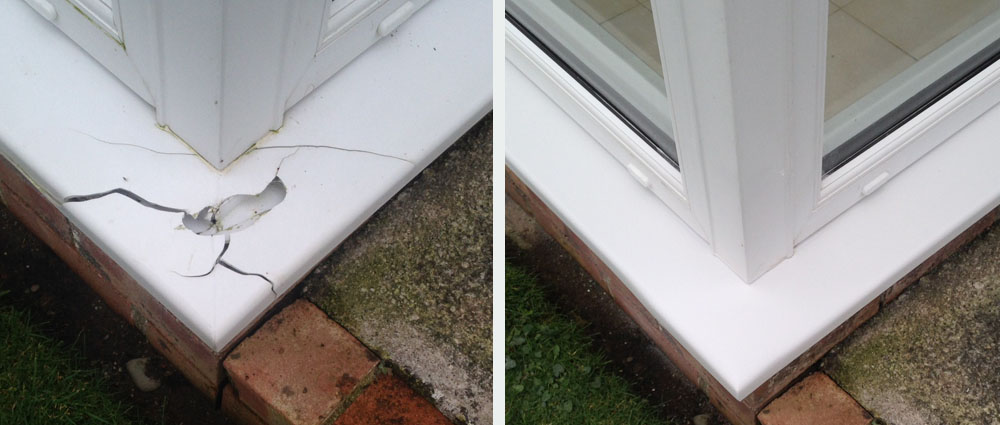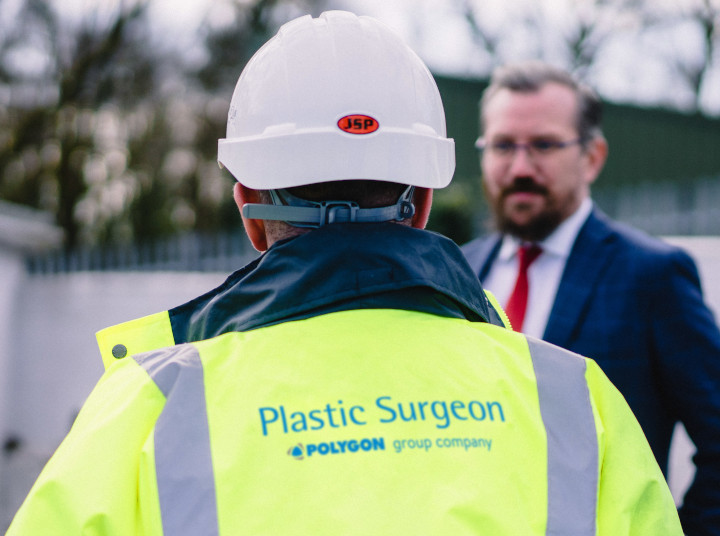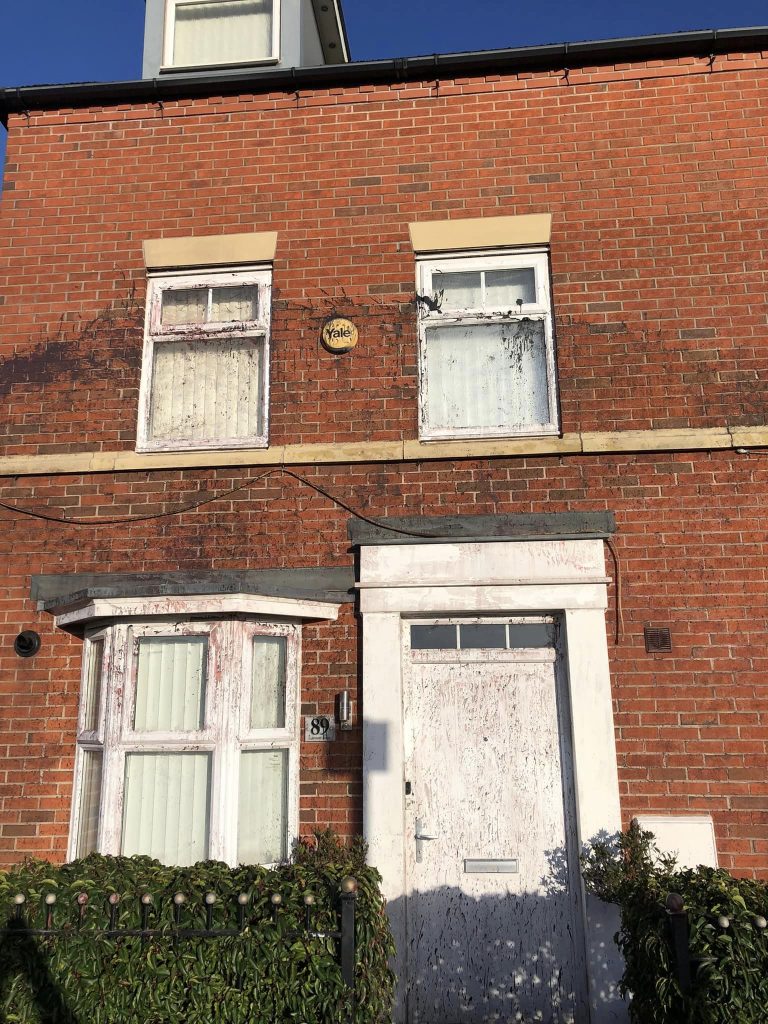uPVC repair is always the most cost-efficient and quickest option compared to the replacement of damaged items around the home.
The most common insurance claims are from forced entry damage to doors and windows; holes/cracks in baths, sinks and shower trays caused by something heavy being dropped on them; burns or stains from candles, cigarettes and hot cooking pans; accidental damage caused by installers and finally, DIY disasters.
Here are five ways to repair uPVC:
- Small holes, gouges, cracks and scratches can be filled, sanded down to recreate the original surface profile, and then sprayed to match any colour – even difficult whites, of which there are many hues.
- Larger holes and splits can be repaired with specialist kits of splints which Plastic Surgeon’s Finishers regularly use. They are adhered to the uPVC profile, ready to receive a two-part gel filler, prior to repair.
- uPVC has a ‘memory,’ so twisted or distorted sections – as happens when people lean ladders up against gutters – can be gently coaxed to their original shape with the careful application of heat.
- Burns and stains can be cut out if deep, or gently abraded out when superficial: again, careful filling and smoothing back is required, before the surface is colour-matched to blend with the original structure.
- Minor scrapes and scratches can be polished away, with careful attention to ‘feathering’ out the repair area as necessary – this meaning the surface damaged is polished out in a shallow ‘dish,’ working away from the main area of damage, so that it is indiscernible to the naked eye.
Plastic Surgeon continues to invest in research and development of new products and techniques, making it possible to remedy damage to even film-coated and coloured uPVC, meaning that there is seldom any reason to send this material to landfill. And even though manufacturers claim uPVC to be almost infinitely recyclable, it is far more sustainable to have Plastic Surgeon repair it.







